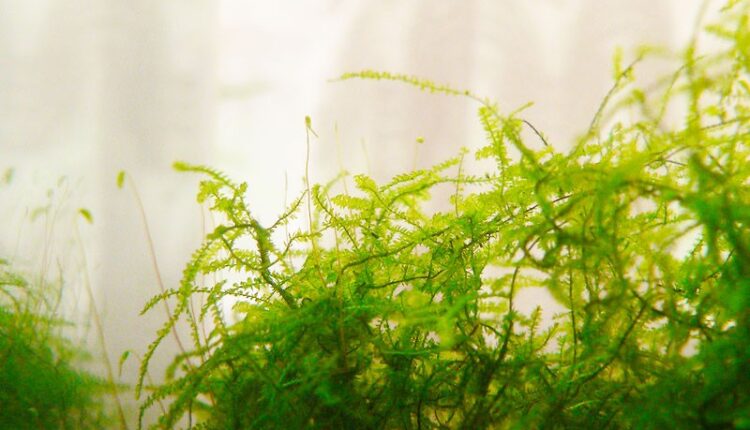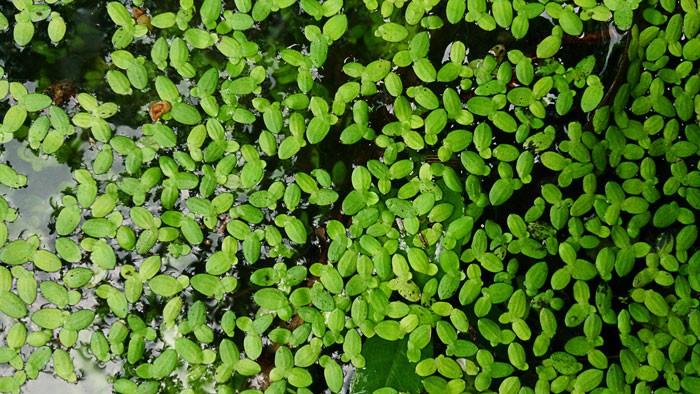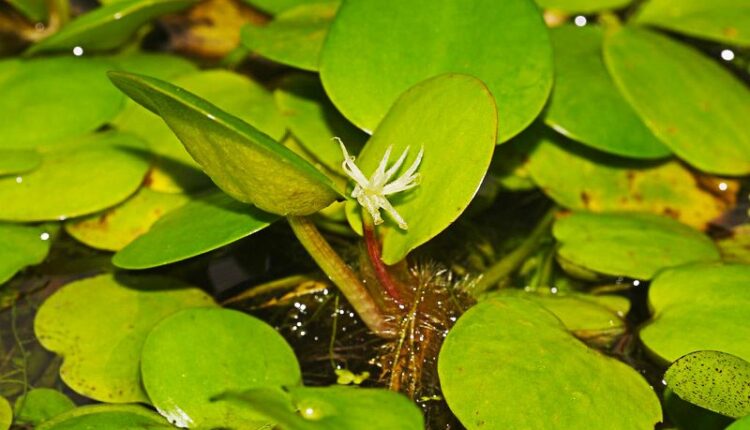Top 7 Best Plants For Betta Fish Tanks

We are going to look at the top 7 best plants for Betta fish tanks.
Plants inside of the aquarium not only look aesthetically pleasing for yourself, but they also purify the water and provide an environment that closely resembles a Bettas natural habitat.
Using plants to replicate their natural environment provides Betta fish with hiding places, resting places, and a natural feeling to the tank that keeps them entertained as it provides plenty of places to explore.
If you are a newbie then do not worry, because most of the plants on this list are beginner-friendly.
So what are the best plants for Betta fish tanks? Let’s dive right in and take a look.
Best Plants For Betta Fish Tanks
1. Water Wisteria
- Full Name: Water Wisteria (Hydrophila difformis)
- Care Difficulty: Easy
- Light Level: Moderate
Water Wisteria is a freshwater plant with vibrant green leaves and is native to the Indian subcontinent.
This particular plant will brighten up your tank, but as a fast growing species, you have to be careful it doesn’t block too much light. A as a single stem can grow up to 20 inches which means it can quickly get out of control.
For this reason Water Wisteria is better in larger tanks. It is possible to keep in smaller tanks such as 10 gallons, but more maintenance is required.
What you can do is use the trimmings after maintenance to plant them elsewhere in the tank. Just make sure that the cuttings have leaves on them to ensure that it can grow.
If you are new to fishkeeping then Wisteria is an excellent choice as it is very hardy. This means that even if you make multiple mistakes as a beginner, it stands a great chance of surviving.
You can plant Wisteria in a number of different ways:
- Planted in substrate: Grow towards the surface.
- Spread across substrate: As a carpet.
For more in-depth information, click here to read our Water Wisteria Ultimate Guide.
2. Java Moss
- Full Name: Java Moss (Taxiphyllum barbieri)
- Care Difficulty: Very Easy
- Light Level: Low to Moderate
Java Moss is easy to care for, visually appealing, and very hardy which is why it is one of the most popular freshwater plants, and an excellent choice for beginners with Betta fish.
The reason it works so well with Beta fish is because of how thick and dense it grows which gives plenty of options for Betas to explore. Just make sure that maintenance is carried out on a regular basis to ensure it doesn’t grow out of control.
There is no need for this species to be rooted into substrate, and it also doesn’t require any special or intense light setup for it to grow. Here is what you can do:
- Let it float.
- Attach it to driftwood.
- Let it carpet at the bottom of the aquarium.
3. Water Sprite
- Full Name: Water Sprite (Ceratopteris thalictroides)
- Care Difficulty: Easy
- Light Level: Moderate
Water Sprite is often referred to as “Betta fish playground” by Betta fish enthusiasts, due to the forest of leaves that bettas love to hang out in.
As with some of the other plants on this list, Water Sprite can either be planted, or simply just left free to float which creates great cover. Too much cover can be an issue if you have other plants, because it can soak up all of the light.
The one thing to be aware of is the rapid growth of this species of plant. There are many advantages to this, but it can also get out of control and become an issue. The good news is that Water Sprite is very easy to trim.
All that is required is to cut the base of the stem. Just make sure to remove all of the leaves to ensure that they do not rot in the tank.
4. Java Fern
- Full Name: Java Fern (Microsorum pteropus)
- Care Difficulty: Very Easy
- Light Level: Low to moderate
Java Ferns are extremely easy to grow without any special lighting equipment, which makes them a popular choice for beginners who own Betta fish.
The best way to use them inside the aquarium is to attach them to driftwood, rocks, and other points using string or rubber bands. This is because the plant will die if you bury the rhizome.
Unlike some of the other plants on this list such as the Water Sprite that has rapid growth, Java Ferns are the opposite and are slow growers. The advantage to this is that they are easier to maintain and will not need to trim every few days.
Expending the Java Fern is also easy because reproduces when it creates baby ferns along it’s leaves. Just simply remove the baby Java Ferns and attach them to hard spots inside of your tank.
5. Duckweed
- Full Name: Duckweed (Lemna minor)
- Care Difficulty: Very (too) Easy
- Light Level: Low to High
Duckweed floats on the surface, and is a great choice for the following reasons:
- Gives a natural, swampy look to your tank.
- Sucks up excess nutrients.
- Provides great cover and shaded area to Bettas and other similar fish.
The downside to Duckweed is the rapid growth that can be extremely hard to manage. Even a single plant placed in the tank can multiply into several in a matter days, and in a wide range of conditions.
This can become an issue with blocking and preventing light from reaching other plants inside of the tank. A good solution to this is to place a floating plastic ring which prevents this plant from taking over the entire surface.
6. Anubias Nana
- Full Name: Anubias Nana (Anubias Barteri var. Nana)
- Care Difficulty: Very Easy
- Light Level: Low to High (indiscriminate)
Beta fish are known to sleep and conserve energy using plant leaves to perch on. The Anubias Nana plant has broad, wide leaves which makes it a perfect choice for Bettas.
The biggest advantage of this species is that they are both small and do not require intensive lighting. Any size tank of 2 gallons and above is a perfect for this plant.
Like Java Ferns, Anubias Nanas are notoriously slow growers which means they are extremely easy to maintain. As well as being rooted in the substrate, Anubias Nana can also be attached to driftwood and rocks.
7. Amazon Frogbit
- Full Name: Amazon Frogbit (Limnobium laeviatum)
- Care Difficulty: Very Easy
- Light Level: Low to High
Amazon Frogbit is a great alternative to Duckweed. The reason for this is because it has a similar look, but is nowhere near as messy, even though it has a moderate to fast growth rate.
As it grows so large with larger roots, not only is it easier to maintain, but it also provides a great option for Betta fish to navigate and build nests.
Amazon Frogbit does a great job of absorbing excess nutrients, but can shade out anything beneath it such as other plants inside of the tank. Like Duckweed, you can place a floating plastic ring to keep it under control.
FAQ
Although plant matter is a small part of their diet, Betta fish are omnivores and require a high-protein diet from meaty foods.
If you ever notice Bettas nibbling at plants, it’s generally the algae that the Betta is after and not the leaves or the plant itself.
Betta fish love plants for the following reasons:
– Hiding Places: Betas require a number of hiding places for them to feel safe.
– Natural Look: Having a variety of plants will replicate a Bettas natural habitat.
– Entertainment: Plants give Betta fish plenty of options to swim through and explore to help prevent boredom.
Toxic Plants for Betta Fish:
– Pothos
– Peace Lily
– Swamp Lily
– Lily of the Valley
– Water Hemlock
– Hygrophila balsamica
– Water Lettuce
Heavily planted tanks replicate how Bettas live in their natural habitat. A tank full of plants gives them hides spots, places to rest, and plenty of options to explore.
If you are worried about having too many plants inside of your aquarium, check out our guide on “Can an Aquarium Have too Many Aquatic Plants”.
Like plants, plenty of rocks inside of the tank closely resemble the environment that they would live in out in the wild. Some of the plants on this list such as the Java Fern can also be attached to rocks.
Plastic plants are fine to use inside of a tank containing Betta fish, providing that they do not have sharp end that could easily tear Betta fins as they are fragile.
Conclusion
So there you have the 7 best plants for Betta fish tanks. They are all excellent plants but some require more maintenance than others. Just choose whichever ones work best for yourself, depending upon how much time for maintenance you are willing to do.
Do you have any of the plants on our list inside of your tank? Let us know in the comments section below.






